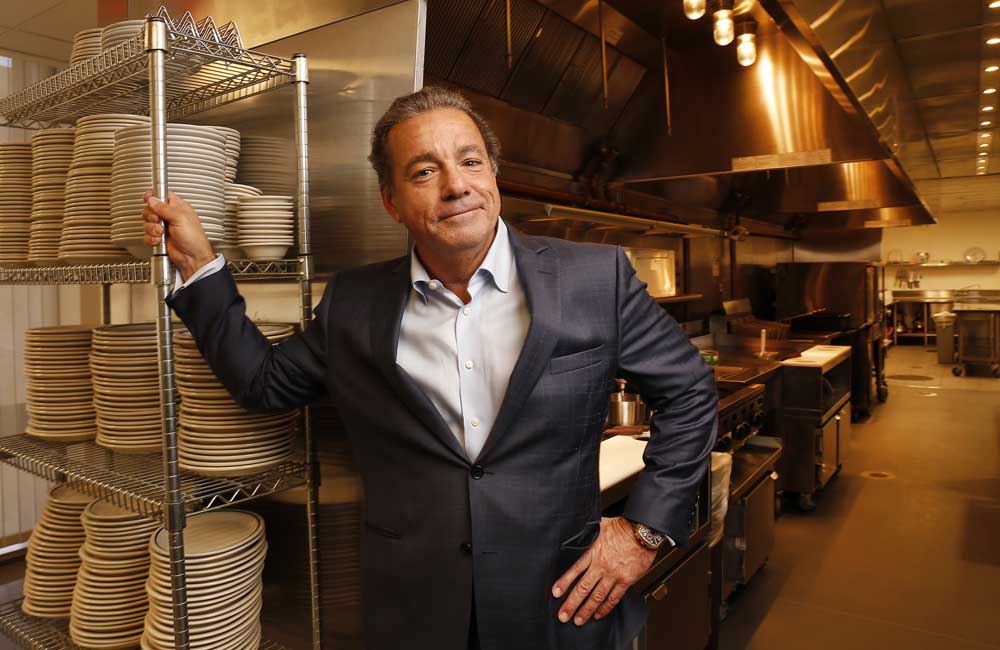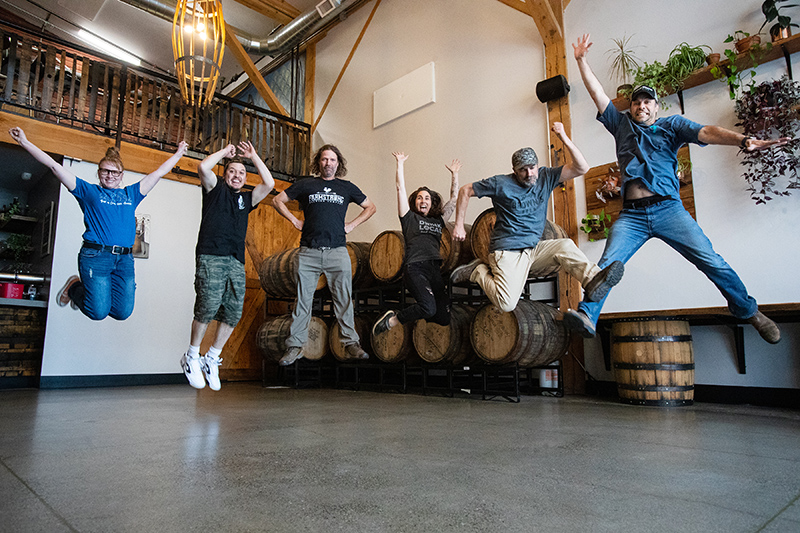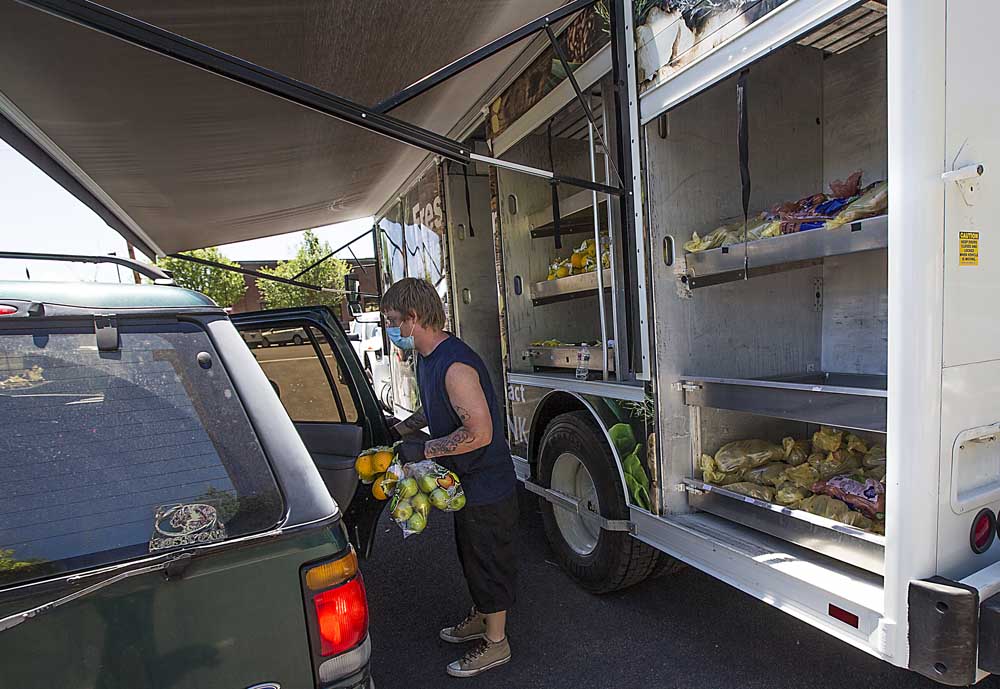Applebee’s and IHOP’s new recipe for success: technology, takeout and takeovers
Published 12:00 am Thursday, February 22, 2018

- Stephen P. Joyce, chief executive the parent company of IHOP and Applebee’s, stands in the test kitchen of the corporate offices in Glendale, California.(Al Seib / Los Angeles Times/TNS)
With free birthday breakfast meals and all-you-can-eat riblets, the IHOP and Applebee’s restaurant chains became a traditional stop for millions of American families seeking a feast.
But casual dining restaurants began to lose their appeal for millennial-generation foodies, and in 2016, Applebee’s tried to update its image. The restaurant got rid of its signature riblets and other items and introduced more upscale options, including steak cooked on wood grills that were newly installed in restaurants.
The move quickly backfired. In the first three months of 2017, Applebee’s’ same-store sales — sales at restaurants open at least 18 months, a key measure of performance —dropped 7.9 percent from a year earlier, said Stephen Anderson, a Maxim Group analyst who focuses on casual dining restaurants.
IHOP saw a 2.1 percent decrease in same-store sales that quarter, which reflected the slump overall at fast-casual restaurants.
“We lost a little relevance with our customers,” said Stephen P. Joyce, chief executive of DineEquity Inc., the Glendale, California, company that owns IHOP and Applebee’s. “We forgot what the customer expects from us and got a wake-up call.”
The company is adding technology to make ordering more convenient, Joyce said, and is paying more attention to “off-premise dining” — that is, takeout orders, often handled by food-delivery services.
DineEquity also wants to expand by acquiring other restaurants, particularly in the fast-casual segment. To reflect the effort, DineEquity Inc. changed its name Tuesday to Dine Brands Global Inc.
DineEquity and the rest of the casual-dining segment of the industry has had a difficult couple of years, partly because restaurant growth has exceeded population growth and demand for those types of restaurants, said Victor Fernandez, executive director of insights and knowledge for TDn2K, which tracks the restaurant industry.
Overall, casual dining restaurants suffered a 1.3 percent decline in same-store sales in 2017 compared with the year before while the bar-and-grill segment, including Applebee’s, fared even worse with a 2.5 percent drop.
Several casual dining restaurants also misjudged the market and implemented changes that scared off core customers, Anderson said.
In contrast, Panera Bread Co., Chipotle Mexican Grill Inc. and other fast-casual chains posted a 5.7 percent overall sales increase in 2017, Fernandez said. Such fast-casual chains are often cheaper and more healthful than casual-dining restaurants, and they get almost half their sales from off-premise dining, he said.
People want food whenever and wherever they want it. They eat at odd hours, not just breakfast, lunch and dinner, and a lot more food is consumed off-premise, whether that’s via delivery or takeout, Fernandez said.
“If you think from a value perspective — price, convenience, speed — quick service and fast casual are more attractive to customers now,” Fernandez said.
Dine Brands is reaching for a slice of the fast-casual restaurant segment’s growth.
By the end of the year Dine Brands aims to identify its first acquisition, which will probably be a healthful, ethnic, fast-casual restaurant, Joyce said.
Dine Brands will need to continue stabilizing its brands before adding any others, which will take at least a few quarters, Anderson added.
The company also is experimenting with technology.
Dine Brands rolled out online ordering for IHOP in the last half of 2017. In the next 18 months, all Applebee’s and IHOP restaurants will have Wi-Fi, tabletop tablets people can use to order food and mobile-phone checkout, said Adrian Butler, Dine Brands’ chief information officer.
“You’ll be able to order your meal and sit down. It’ll get delivered almost immediately,” Joyce said. “You’ll know whether or not there’s a wait. There will be no point when the customer doesn’t control their own timetable.”
A big focus will be off-premise dining, Butler said. That includes partnering with delivery companies like UberEats, DoorDash and Grubhub, as well as more unexpected companies, such as General Motors. Dine Brands worked with GM to develop technology that enables drivers to order food by tapping the IHOP or Applebee’s logos on their dashboards, Butler said.
Applebee’s and IHOP have also reverted to offering the deals, food and environment they are known for. IHOP started the year with an all-you-can-eat pancake day for $3.99, and Applebee’s offered $1 Bahama Mama drinks for all of February, which lured in younger customers.
As the company has implemented its new strategy, Dine Brands has been “in good shape financially,” Joyce said.
Anderson said he thinks Dine Brands has the right idea. The company’s plan to avoid being a “hip millennial destination” is also a plus.
“We’re comfortable with who we are and what we stand, for and we simply wouldn’t pretend to be an overly hip or trendy brand,” Applebee’s President John Cywinski said Tuesday. “It’s unlikely you’ll see Sriracha, quinoa or pomegranate any time soon.”






